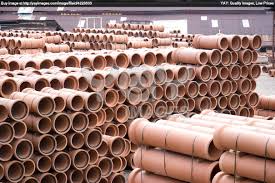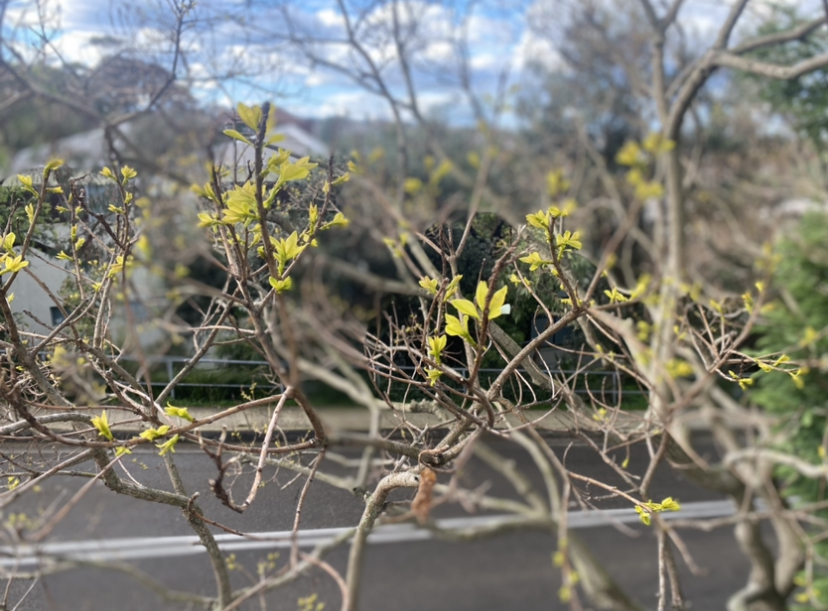Archives
Stop Tree Roots in Drains. Property Managers Guide
I’m Dave Conroy visiting Townsville in the dry tropics in Far North Queensland.
Townsville and surrounding towns have many blocked drains caused by tree roots.
Vaporooter Stops Tree Roots in Drains and It comes with a Guarantee. If you get a blocked drain after we apply Vaporooter we’ll come and clear your blockage for FREE! It is that good!
If you’re a Property Manager in Townsville with repeat blocked drains and you’re looking for an alternative to pipe relining you might consider Vaporooter.
Check it out at www.VaporooterAustralia.com.au or Call me on 1800 637 600
Stop Tree Roots in Drains. Home Owners Guide.
G’day, Its Dave Conroy here.
I’m in Townsville in North Queensland and my mission is to Stop Tree roots in sewer pipes.
I’m from VaporooterAustralia.com.au
If you are a homeowner with tree roots growing in your sewer pipes and you are looking for a simple way to stop tree roots in your drains, then I want you to check out my little book, The Home Owners Guide to tree root control.
It’s got everything you need to know about stopping tree roots in your drains.
So contact me on 1800 637 600 or go to www.VaporooterAustralia.com.au
Spring is coming and your tree roots are in the gym
As spring approaches and the temperatures start to rise, trees begin to prepare for their active growth phase. During winter, many trees enter a state of dormancy, where their metabolic processes slow down to conserve energy and protect themselves from cold temperatures. As spring arrives, the tree root system becomes quite active in response to changing environmental conditions. Here’s what the tree root system is doing as spring approaches:
- Absorbing water and nutrients: As the ground warms up and rainfall increases, the tree roots become more active in absorbing water and essential nutrients from the soil. This is crucial for supporting the tree’s growth and development during the upcoming growing season. Your sewer pipes are an easy source of water and nutrients
- Sending signals to the rest of the tree: The root system communicates with the above-ground parts of the tree through chemical and hormonal signals. This communication helps coordinate the tree’s growth and responses to the environmental cues.
- Extending and branching out: Tree roots grow and expand as the soil becomes more suitable for root growth. The root system will extend further into the surrounding soil, and new root branches will form to explore fresh areas for water and nutrients.
- Establishing new relationships: Many trees form symbiotic relationships with fungi in the soil. These fungi help the tree roots by extending their nutrient-absorbing capacity, and in return, the tree provides sugars produced through photosynthesis to the fungi. During spring, these relationships become more active and beneficial.
- Repairing and regenerating: Like any living organism, tree roots may experience some damage or stress during winter. As spring arrives, the tree allocates resources to repair and regenerate any damaged parts of the root system.
- Preparing for shoot growth: The root system plays a crucial role in providing the necessary resources for the tree’s above-ground parts, such as leaves, branches, and buds. As the tree prepares for new shoot growth in spring, the tree root system ramps up its activity to support the upcoming foliage and flower production.
In summary, the tree root system becomes highly active during late winter and early spring, absorbing water and nutrients, establishing beneficial relationships with fungi, extending into new areas, and coordinating with the rest of the tree to support its growth and development throughout the upcoming season.
5 Reasons why Pipe Relining is NOT the only solution
85% of Blocked drains are caused by tree roots!
While pipe relining can be an effective method for rehabilitating damaged pipes, there are certain scenarios where it may not be the most suitable solution. Here are five reasons why pipe relining may not be the preferred choice:
- Extensive Pipe Damage: If the pipes are severely damaged, collapsed, or have extensive cracks, relining may not be a viable option. In such cases, complete pipe replacement might be necessary to ensure long-term reliability and functionality.
- Reduced Pipe Diameter: Pipe relining involves inserting a liner inside the existing pipe, which can reduce the internal diameter of the pipe. If the reduction in diameter is significant, it may negatively impact the flow capacity of the pipe and cause potential blockages or efficiency issues.
- Incompatible Pipe Materials: Pipe relining is typically suitable for a range of pipe materials, such as PVC, clay, cast iron, and concrete. However, if the existing pipe material is incompatible with the lining material or if there are irregularities in the pipe structure, relining may not provide a secure and long-lasting solution.
- Limited Access Points: Pipe relining requires access points to insert the liner into the existing pipe. If there are limited or restricted access points, such as in densely built areas or underground locations, it may be challenging to carry out the relining process effectively.
- Cost Considerations: Pipe relining can be more expensive than traditional pipe replacement methods, particularly in cases where there is significant damage or complex pipe configurations. In such situations, it may be more cost-effective to opt for pipe replacement instead of relining.
It’s important to consult with a professional plumber or pipe rehabilitation specialist to assess the condition of the pipes and determine the most suitable solution based on your specific circumstances.
When fixing your blocked drains, a “one size fits all” approach is outdated!
The best approach depends on your circumstance and specifically, what is going on with the drains at your place.
If you’re not sure which method is best for your circumstance, ask me.
Call 1800 637 6oo
Is pipe relining the only way to Stop Tree Roots in Drains?
No! Pipe relining is definitely NOT the only way to keep tree roots out of drains.
Some other methods include:
- Chemical treatments: Chemical root killers can be put down the drain to kill the roots and prevent future growth.
- Cut the roots: Tree roots can be physically cut out of the pipes using specialized tools like High-Pressure water drain cleaning or an electric eel. Depending on the circumstance both are great ways to cut roots.
- Regular maintenance: Regular cleaning and maintenance of your pipes can help prevent root re-growth by removing debris and preventing blockages.
- Excavation and renewal: Just as it sounds, excavate the existing pipe line and replace it with PVC pipe and fittings. That usually includes excavation by hand or a machine like a back-hoe and depending on where the pipes are located under your lawns and gardens, driveway or swimming pool, reparations to your site can be huge.
- Tree root barrier installation: A barrier, like a root-resistant liner or metal mesh, can be installed around the pipes to prevent roots growing around and into the pipes.
In some cases, a combination of these methods may be used for an effective solution.
When fixing your blocked drains, a “one size fits all” approach is outdated!
The best approach depends on your circumstance and specifically, what is going on with the drains at your place.
If you’re not sure which method is best for your circumstance, ask me. Call 1800 637 6oo
What is Pipe Relining?
Pipe relining has become a fashionable thing.
There is a place for pipe relining usually when the structure of the pipe has been compromised or broken.
Pipe relining involves inserting a liner, usually fibreglass resin, into the existing drain pipes, creating a new, seamless, and durable pipe within the old one, without the need for excavation.
This process is a little disruptive but, less disruptive, faster, and more cost-effective than traditional pipe replacement. By relining the pipes, you can restore the flow and function of your sewer system, prevent future damage, and extend the life of your pipes.
We have used pipe relining to repair broken and damaged pipes especially in those few situations where excavation is difficult or dangerous, like under a roadway or when the pipes are buried deep in the ground on a tight work site.
Some plumbers will recommend pipe relining for a simple blocked drain caused by tree roots where the roots have just grown through one of the many pipe joints in an earthenware pipeline.
I’ve seen multiple instances where after relining a section of the pipe, tree roots just grow along the pipe line and find another pipe joint to grow through.
At the time of writing this, in Sydney Australia, the cost to reline one metre of 100mm or 4″ pipes is about $1,000.00 per metre.
That means, to reline 30 metres or 100ft of sewer pipe will cost about $30,000. And that’s a lot of money!
You can Click here to see an earlier post about pipe relining costs.
If you’re researching options on How to Stop Tree Roots in Drains or you’re unsure if pipe relining is the answer to your problem, I invite you to call me on 1800 637 600.
Vaporooter – There are some setup costs
G’day! Its Dave Conroy. I’m here today to talk about Vaporooter.
There are some set-up costs if you are considering putting Vaporooter down your sewer pipes if you’ve got repeat blockages caused by tree roots.
The setup costs are a one off thing and, what they include is putting a drain camera through your pipes to survey exactly what is going on inside your pipes to determine if your pipes are actually suitable for a Vaporooter application. 9/10 times they are!
Now, the most common question people ask me is “Does the product work?” Yes, It does!
We’re actually applying Vaporooter at this property in Vaucluse in Sydney’s eastern suburbs this morning. This is a client who has had it applied for five years in a row.
So, to sumarise:
Yes, there some setup costs.
Yes, It does work.
Yes, you need to have it applied annually.
If you’ve got any questions, through Vaporooter Australia, please contact me on 1800 637 600
Or go to our website: VaporooterAustralia.com.au
Vaporooter or pipe re-lining – A cost comparison
Hello, its Dave Conroy here and I’m here to talk about my favourite subject, stopping tree roots in sewer pipes.
And in particular with Vaporooter!
Now, one of the most common questions that is asked of me is “Should I re-line my pipes or Should I use Vaporooter?”
Simply put, relining is a great process in the right place. To re-line a single metre, one metre of pipeline here in Sydney will cost you about one thousand dollars. For that amount of money, you could treat a 30 metre section of pipeline! So, economically, Vaporooter is a great option.
To reline 30 metres it’s about 30 grand.
To treat 30 metres with Vaporooter will cost you about $1000.00. It will keep tree roots away and give you an opportunity to work out what to do with your pipes in the long term.
If you have any questions about whether you should re-line or apply Vaporooter to your home,
Call me on 1800 637 600 or go to www.VaporooterAustralia.com.au
Tree roots enter pipes through the joints
Clay sewer pipes provide a great opportunity for tree roots to get into your pipeline.
These pipes are usually 2-3 foot or 600-900mm long and there could be up to 50 individual pipes, bends and junctions in a 30 metre (100ft.) pipeline.
That means there are at least 50 pipe joints for a tree to get its roots into your sewer pipes and helps explain why you can have multiple blockages in your pipes.
To excavate and repair or reline where the tree roots are getting in today doesn’t mean the tree roots won’t get in a little further downstream.
Vaporooter treats every joint in the pipeline.

Tree roots get in through the joints
Tree roots grow through pipe joints.
Tree roots usually enter your pipe line through the pipe joints.
Did you know each clay sewer pipe is usually 2-3 foot long? That’s 600-900mm each.
So, in a pipe line 100 feet in length (30 metres), there could be up to 50 individual pipes with bends and junctions.

That means there are at least 50 different places for tree roots to get into your sewer pipes.
That’s a lot of opportunity for tree roots searching for moisture in our hot Australian climate where rainfall is unpredictable.
If you’re considering pipe relining, root cutting or a pipe renewal as options for keeping the roots at bay, remember, the tree roots can just move down to the next pipe joint that hasn’t been protected.




